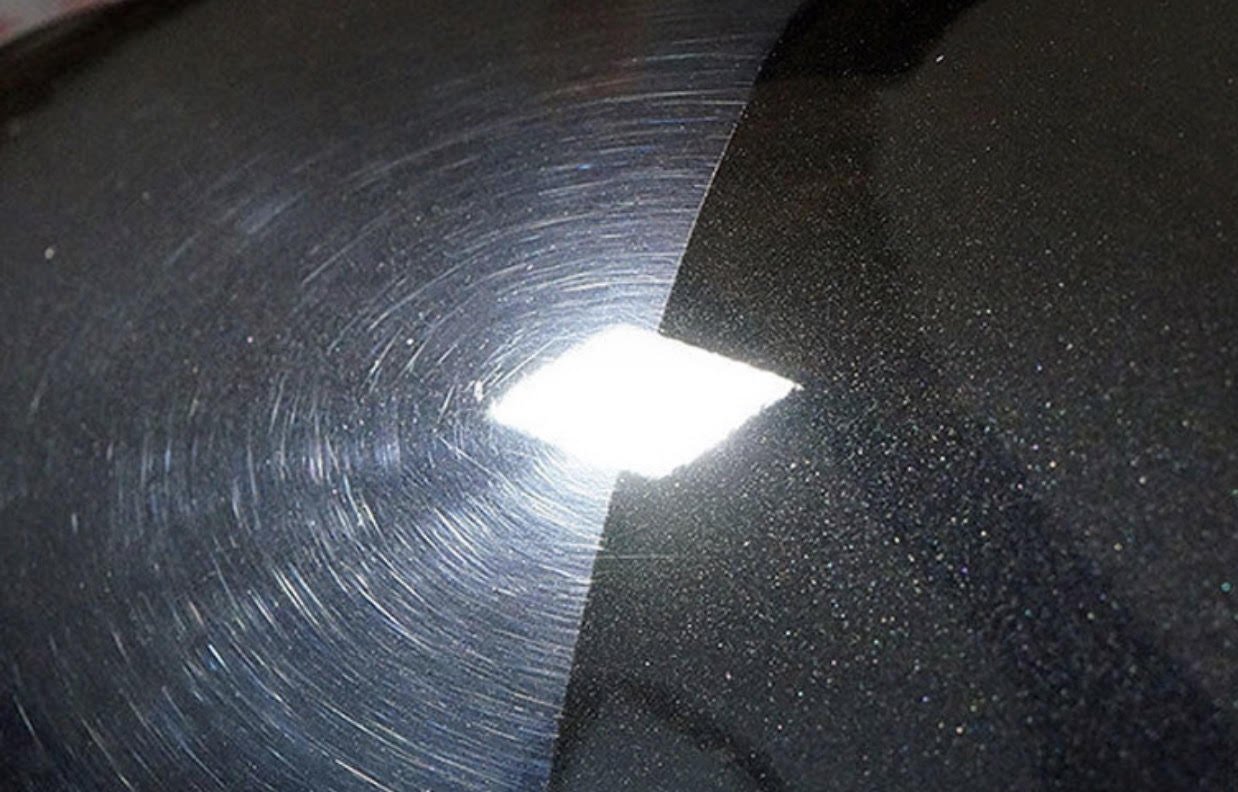Let’s talk Paint correction
a before and after of a single stage correction on a used vehicles paintwork.
What Is Paint Correction and Why It's Essential Before Ceramic Coating
If you're considering protecting your vehicle’s finish with a ceramic coating, you’ve likely heard the term paint correction. While it may sound like a fancy add-on, paint correction is a critical step that shouldn't be skipped before applying any long-term paint protection like a ceramic coating. Here's what paint correction is, why it's necessary, and how it ensures you get the most out of your investment in ceramic protection.
What Is Paint Correction?
Paint correction is the meticulous process of removing imperfections from a vehicle’s clear coat—the outermost layer of your car’s paint. These imperfections can include:
Swirl marks
Fine scratches
Water spots
Oxidation
Holograms
Etching from bird droppings or bug splatter
Over time, these blemishes build up due to improper washing techniques, environmental exposure, and regular wear and tear. Paint correction uses machine polishers, specialized compounds, and professional techniques to level out the clear coat and restore a deep, glossy, and mirror-like finish.
Depending on the condition of the paint, paint correction may involve one, two, or even three stages of polishing, gradually refining the surface until imperfections are minimized or completely removed.
Why Paint Correction Is Critical Before Ceramic Coating
Ceramic coating is a semi-permanent, liquid polymer that chemically bonds to your vehicle’s clear coat, providing a layer of hydrophobic and UV-resistant protection. Once cured, it locks in whatever condition the paint is in—good or bad.
Here’s why doing paint correction first is so important:
1. Ceramic Coating Seals Everything In
Ceramic coating doesn’t “fix” scratches or defects—it preserves whatever is on the surface. If swirl marks, hazing, or water spots are present when the coating is applied, they’ll be sealed in for years and become nearly impossible to remove without stripping the coating.
2. Maximizes Gloss and Depth
The true shine of a ceramic coating is only as good as the surface beneath it. Corrected paint reflects light more evenly, enhancing depth, clarity, and gloss. Applying ceramic over a properly polished surface results in that showroom-quality finish everyone wants.
3. Improves Coating Bonding
Paint correction includes not only polishing but also prepping the surface with a final wipe-down to remove any polishing oils or residue. This ensures the ceramic coating bonds directly to the paint, improving its durability and longevity.
4. Boosts Resale Value and Satisfaction
Whether you’re preserving a daily driver or protecting a weekend showpiece, a corrected and coated vehicle looks significantly better—and stays that way longer. This can increase resale value and your overall satisfaction with the look and feel of your vehicle.
The Bottom Line
Think of paint correction as hitting the "reset" button on your car’s finish. By removing years of surface damage, you’re not only enhancing the look of your vehicle but also setting the stage for ceramic coating to perform at its best.
Ceramic coatings are a long-term investment. Give your paint the prep it deserves before sealing it in—because when it comes to your car’s appearance, the details really matter.
Interested in paint correction and ceramic coating services? Contact us today for a free inspection and quote. Let us help you bring out the best in your vehicle—inside and out.

